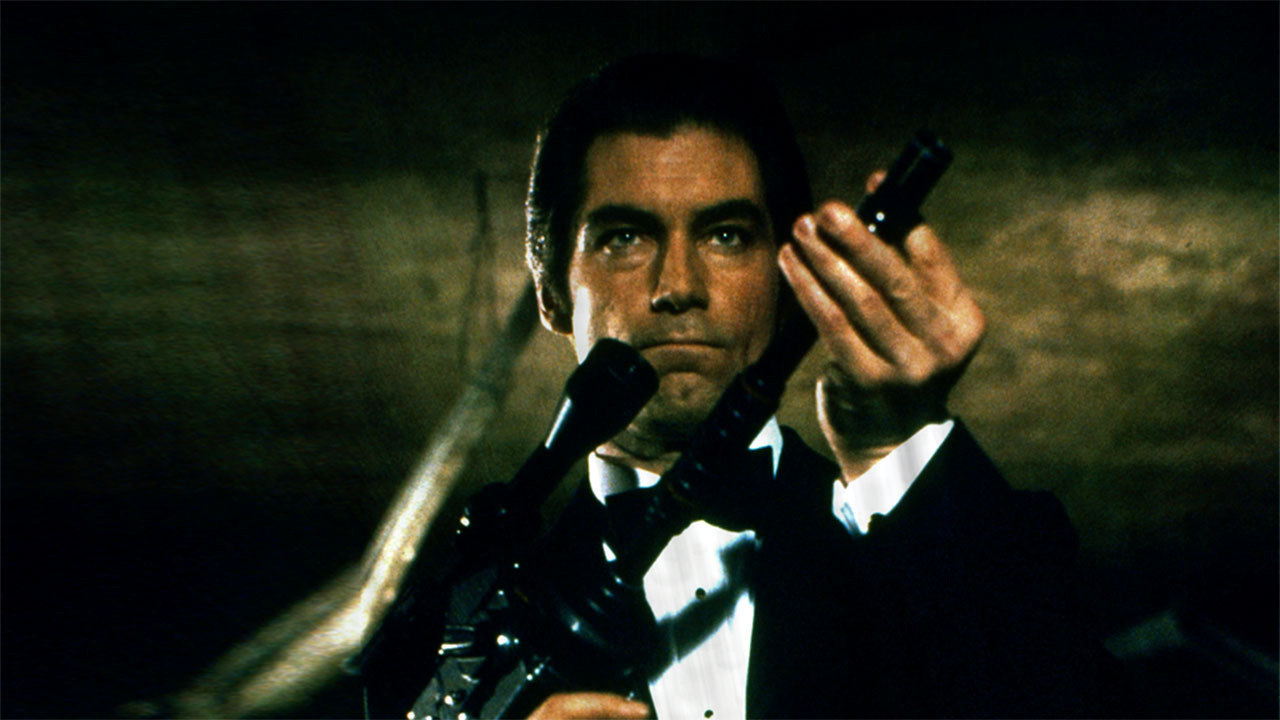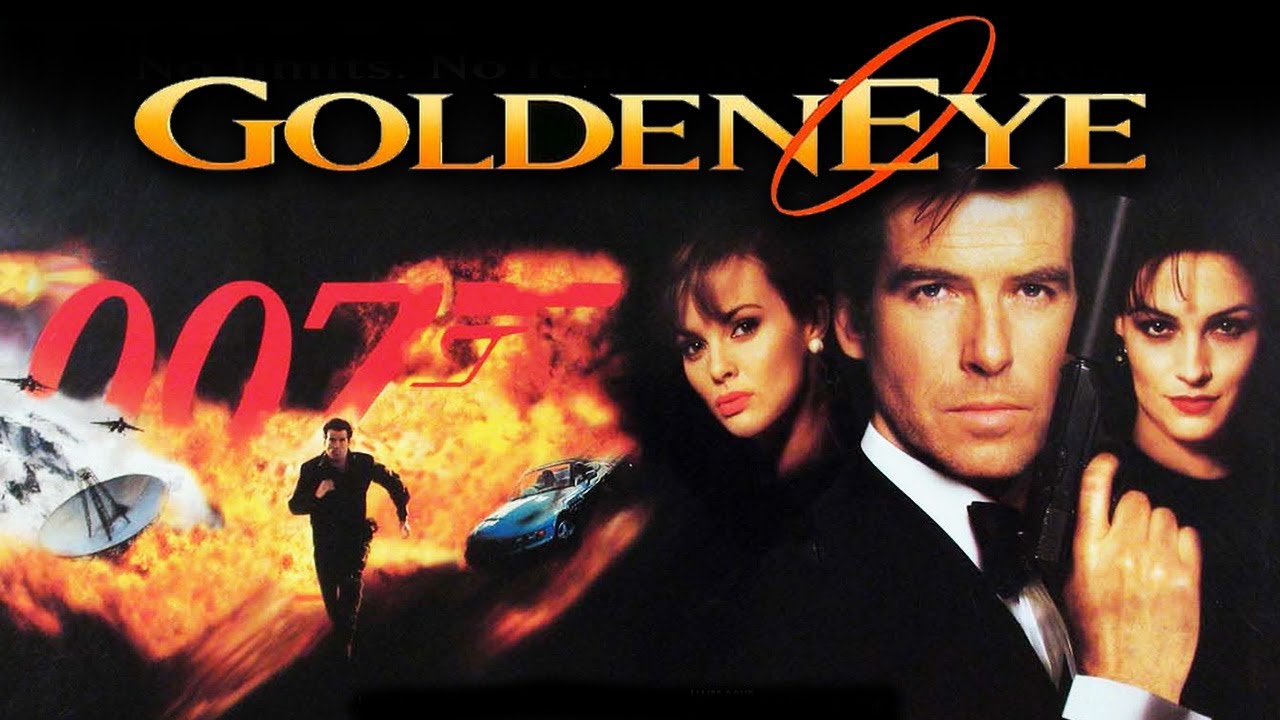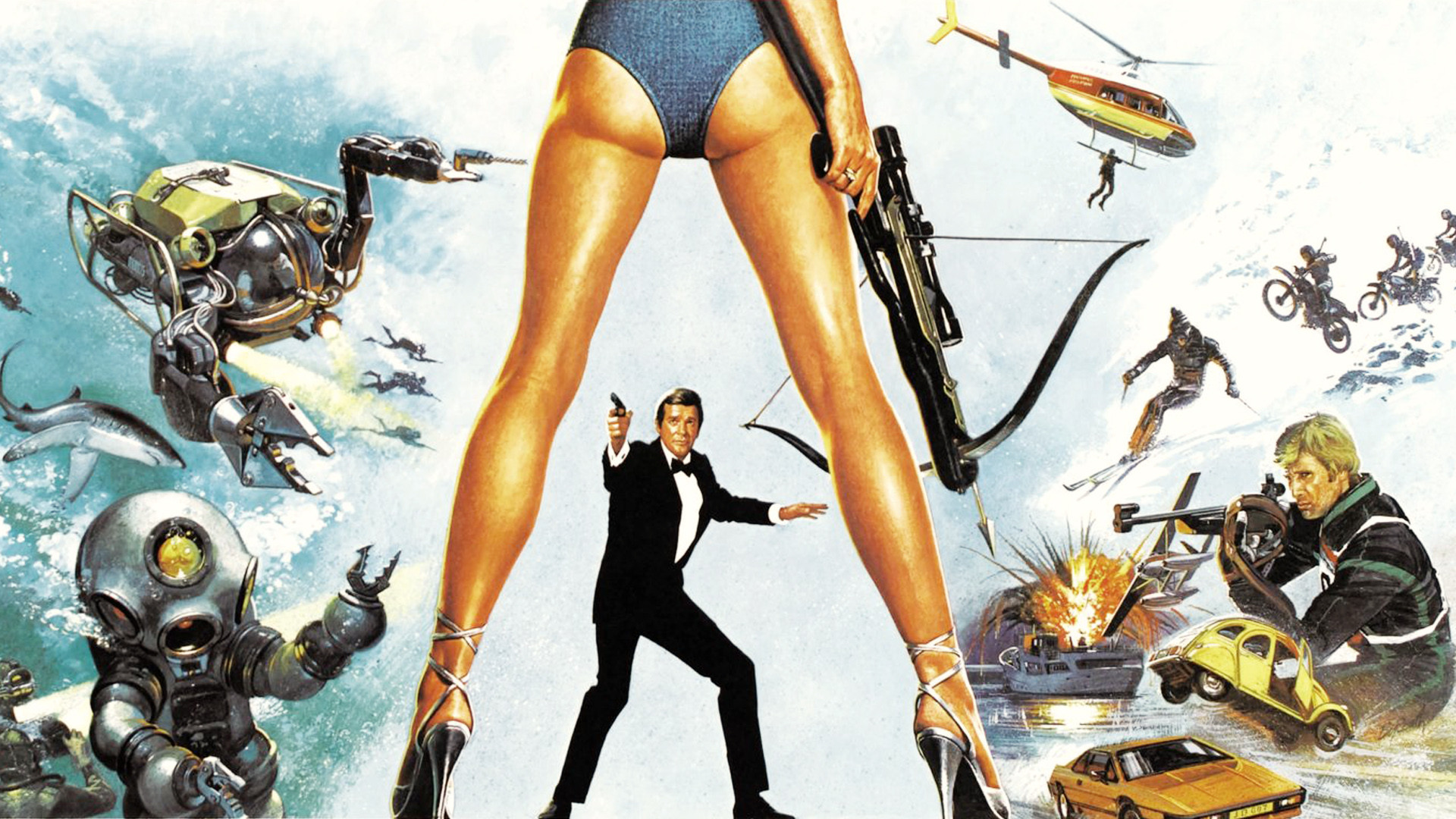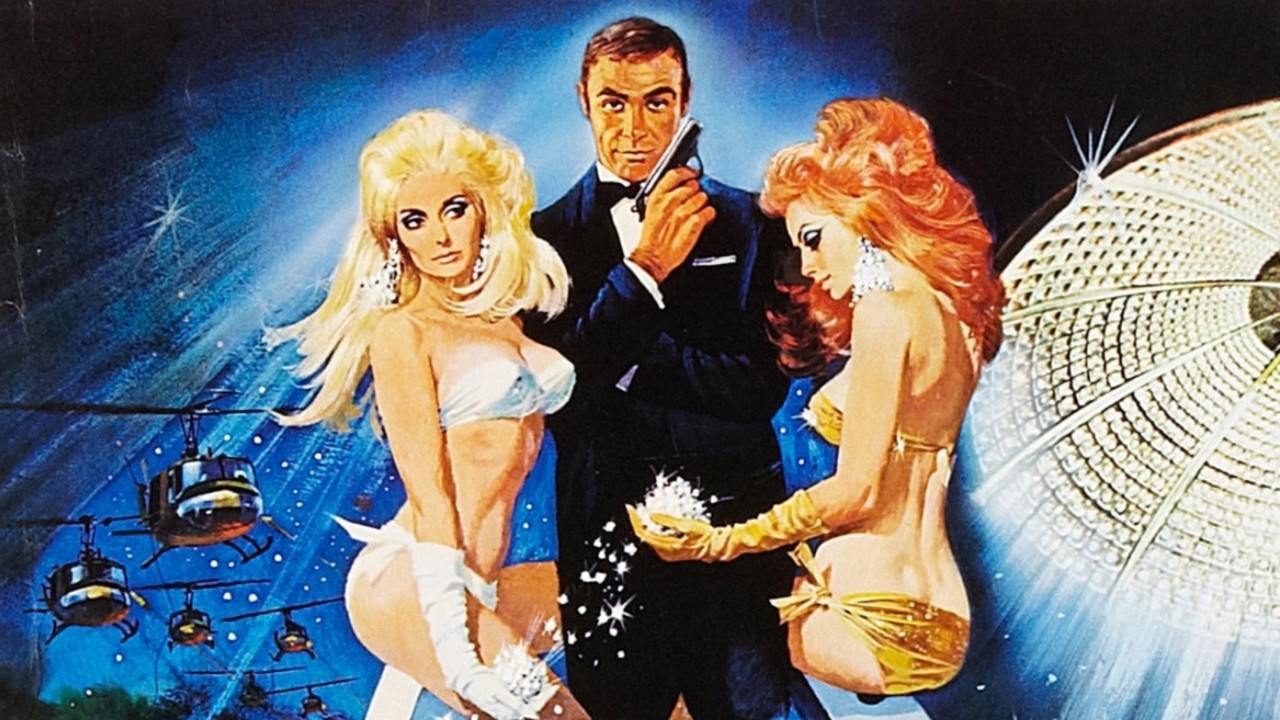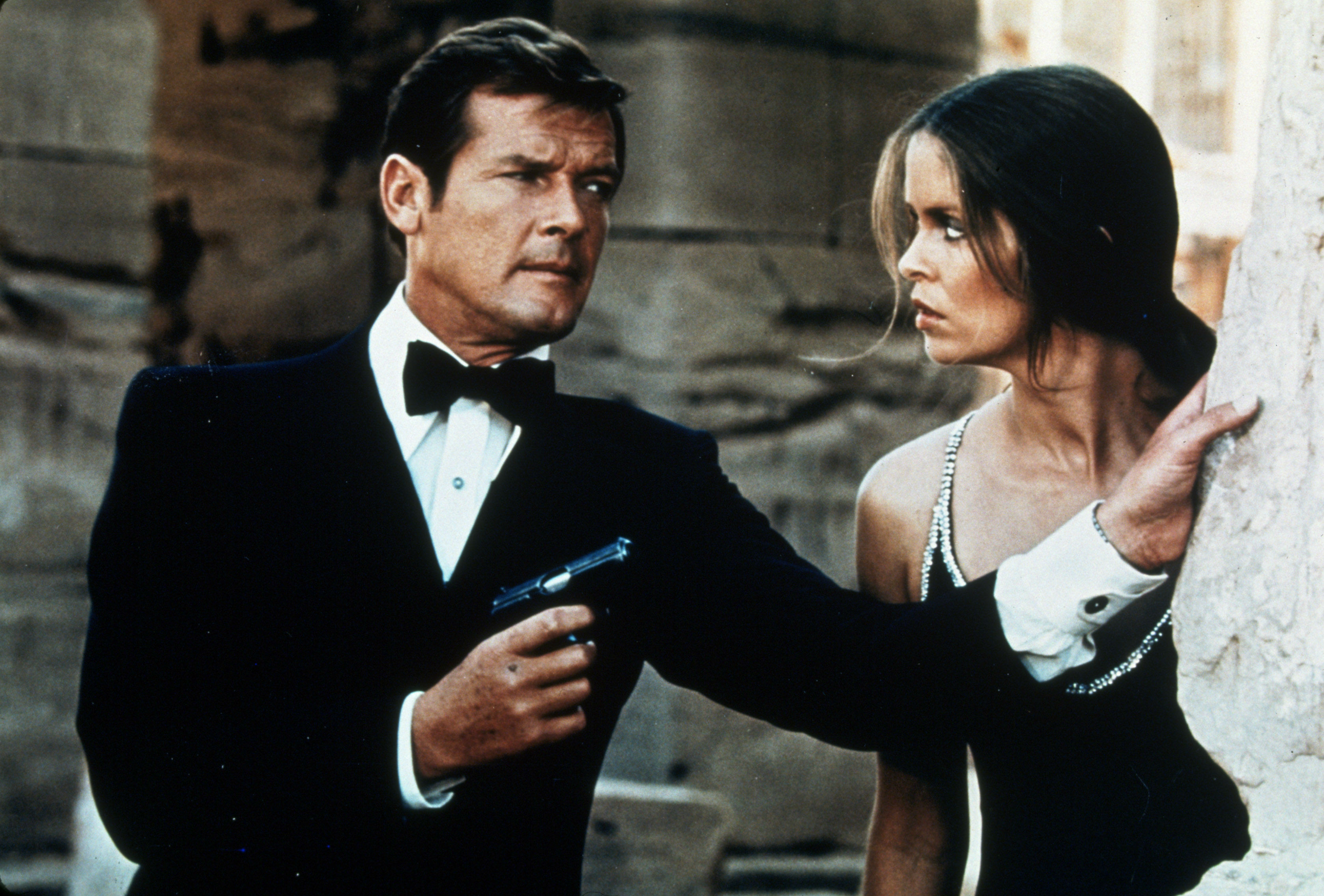Licence to Kill (1989, Dir. John Glen):
There was the shape of a body on Leiter’s bed. It was covered with a sheet. Over the face, the sheet seemed to be motionless. Bond gritted his teeth as he leant over the bed. Was there a tiny flutter of movement?
Bond snatched the shroud down from the face. There was no face. Just something wrapped round and round with dirty bandages, like a white wasps’ nest.
He softly pulled the sheet down further. More bandages, still more roughly wound, with wet blood seeping through. Then the top of a sack which covered the lower half of the body. Everything soaked in blood.
There was a piece of paper protruding from a gap in the bandages where the mouth should have been.
Bond pulled it away and leant down. There was the faintest whisper of breath against his cheek. He snatched up the bedside telephone. It took minutes before he could make Tampa understand. Then the urgency in his voice got through. They would get to him in twenty minutes.
He put down the receiver and looked vaguely at the paper in his hand. It was a tough piece of white wrapping paper. Scrawled in pencil in ragged block letters were the words:
HE DISAGREED WITH SOMETHING THAT ATE HIM
— Ian Fleming, Live and Let Die
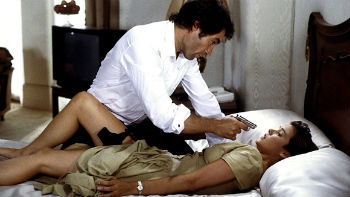 Of all the Bond movies, Licence to Kill might be the most divisive. To some, it’s an unrecognized highlight of the series, biding its time to be truly appreciated, much like On Her Majesty’s Secret Service had to languish in the shadows for a few decades before emerging as a critical and fan favorite. To others, it’s a giant missed opportunity, a misstep, an admirable but unsuccessful attempt to usher Bond into more mature territory. To the box office, it was a disappointment. 1989 was the year of sequels and big-budget franchises — Back to the Future 2, Batman, Ghostbusters 2, Indiana Jones and the Last Crusade, Lethal Weapon 2, and Star Trek 5, just to name a few — and in that cut-throat environment, Licence to Kill had little chance of success. Many autopsies have been conducted over the movie’s corpse over the years, with plenty of theories offered on the cause of death: a lackluster marketing campaign, the brutal competition (never again would a Bond film be released in the heat of summer), general audiences’ antipathy towards Timothy Dalton, and of course, the quality of the film itself.
Of all the Bond movies, Licence to Kill might be the most divisive. To some, it’s an unrecognized highlight of the series, biding its time to be truly appreciated, much like On Her Majesty’s Secret Service had to languish in the shadows for a few decades before emerging as a critical and fan favorite. To others, it’s a giant missed opportunity, a misstep, an admirable but unsuccessful attempt to usher Bond into more mature territory. To the box office, it was a disappointment. 1989 was the year of sequels and big-budget franchises — Back to the Future 2, Batman, Ghostbusters 2, Indiana Jones and the Last Crusade, Lethal Weapon 2, and Star Trek 5, just to name a few — and in that cut-throat environment, Licence to Kill had little chance of success. Many autopsies have been conducted over the movie’s corpse over the years, with plenty of theories offered on the cause of death: a lackluster marketing campaign, the brutal competition (never again would a Bond film be released in the heat of summer), general audiences’ antipathy towards Timothy Dalton, and of course, the quality of the film itself.
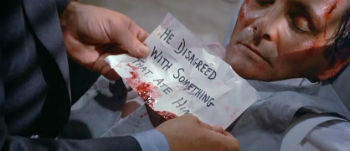 One thing is for sure — Licence to Kill was a star-crossed production from the start. A Writer’s Guild strike forced co-producer Michael G. Wilson to step in and write most of the script. Wilson and fellow producer Albert Broccoli planned to shoot in China, which might have given the film some oomph in terms of unique locations (early outlines suggested a motorcycle chase on the Great Wall), but fears about production costs and Chinese bureaucracy scrapped that idea. When Mexico came calling with down-market (and discounted) access to its filming studios, the producers were all too happy to accept and cut costs.
One thing is for sure — Licence to Kill was a star-crossed production from the start. A Writer’s Guild strike forced co-producer Michael G. Wilson to step in and write most of the script. Wilson and fellow producer Albert Broccoli planned to shoot in China, which might have given the film some oomph in terms of unique locations (early outlines suggested a motorcycle chase on the Great Wall), but fears about production costs and Chinese bureaucracy scrapped that idea. When Mexico came calling with down-market (and discounted) access to its filming studios, the producers were all too happy to accept and cut costs.
Give them some credit for chutzpah, though: rather than standing pat after the middling reception of The Living Daylights, they decided to shake things up in a manner not seen since they hired George Lazenby as Bond twenty years before. The posters for The Living Daylights had proclaimed Dalton “the most dangerous Bond ever,” and this time the filmmakers were intent on proving it. Adapting elements from Ian Fleming’s Live and Let Die and his short story “The Hildebrand Rarity,” Licence to Kill (original, better title: Licence Revoked — too bad United Artists chickened out from using it, believing U.S. audiences wouldn’t have a cotton-pickin’ idea what “revoked” meant) would find Bond going rogue to avenge the maiming of his CIA buddy Felix Leiter (David Hedison) and the murder of Leiter’s wife (Priscilla Barnes). The villain this time wouldn’t be a lunatic with delusions of grandeur but a well-connected Latin American drug lord from the fictional Republic of Itshmus, and Bond would triumph not with savoir faire and the well-timed gadget, but with raw wits and bull-headedness. The movie posters grimly promised: “His bad side is a dangerous place to be.” With a script targeted to fit Dalton’s style and a plotline unique to the series, the scene was set for something memorable.
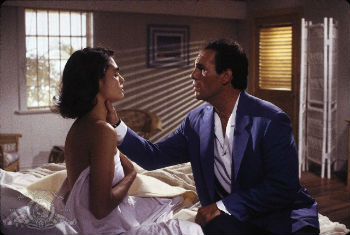 And memorable Licence to Kill is, though not always for the right reasons. Following the prevailing cinema trend of graphic, bloody action, the movie doesn’t pull punches. Within the first half hour a man’s heart is carved out of his chest, a driver’s head is bashed in with a rifle butt, a blushing bride is raped and then murdered, and two men are fed to sharks. The fact that some of these events happen just off-screen doesn’t lessen the impact. In The Living Daylights Dalton was a cool-headed if somewhat easily irritated Bond; in Licence to Kill his Bond is off the reservation and close to off his rocker, placing other operations in jeopardy thanks to his single-minded pursuit of Franz Sanchez (Robert Davi). Infiltrating Sanchez’s organization via his estranged mistress Lupe Lamora (Talisa Soto) and turning Sanchez against those who trust him much like Toshiro Mifune did in Yojimbo, 007 is disavowed and on his own, save for mercenary CIA pilot Pam Bouvier (Carey Lowell) and the redoubtable Q (Desmond Llewellyn, the one ray of sunshine in the darkness), who turns up with the typical outlandish gadgets (“Explosive alarm clock, guaranteed to never wake up anyone who uses it”).
And memorable Licence to Kill is, though not always for the right reasons. Following the prevailing cinema trend of graphic, bloody action, the movie doesn’t pull punches. Within the first half hour a man’s heart is carved out of his chest, a driver’s head is bashed in with a rifle butt, a blushing bride is raped and then murdered, and two men are fed to sharks. The fact that some of these events happen just off-screen doesn’t lessen the impact. In The Living Daylights Dalton was a cool-headed if somewhat easily irritated Bond; in Licence to Kill his Bond is off the reservation and close to off his rocker, placing other operations in jeopardy thanks to his single-minded pursuit of Franz Sanchez (Robert Davi). Infiltrating Sanchez’s organization via his estranged mistress Lupe Lamora (Talisa Soto) and turning Sanchez against those who trust him much like Toshiro Mifune did in Yojimbo, 007 is disavowed and on his own, save for mercenary CIA pilot Pam Bouvier (Carey Lowell) and the redoubtable Q (Desmond Llewellyn, the one ray of sunshine in the darkness), who turns up with the typical outlandish gadgets (“Explosive alarm clock, guaranteed to never wake up anyone who uses it”).
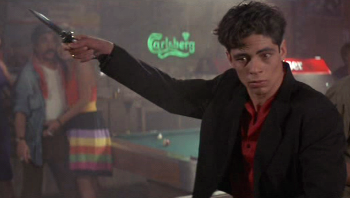 For such a relentless story on paper, Licence to Kill is curiously slack in several departments. With its setting (the Florida Keys, Latin America) its drug lord storyline, and its emphasis on money — everyone except Bond obsesses over it — many pegged the movie as a full-blown episode of Miami Vice, but that would be an insult to the style of Miami Vice. Bond production budgets had bottomed out, and Licence is ramshackle even by the standards of ’80s Bond flicks: the lighting is harsh, the sets unpersuasive, the locales unremarkable. The filmmakers are aware that it’s a bit incongruous to see the urbane 007 stuck in a banana republic, hobnobbing with money men and crude gangsters, but they can’t extract wit or bite from these interactions.
For such a relentless story on paper, Licence to Kill is curiously slack in several departments. With its setting (the Florida Keys, Latin America) its drug lord storyline, and its emphasis on money — everyone except Bond obsesses over it — many pegged the movie as a full-blown episode of Miami Vice, but that would be an insult to the style of Miami Vice. Bond production budgets had bottomed out, and Licence is ramshackle even by the standards of ’80s Bond flicks: the lighting is harsh, the sets unpersuasive, the locales unremarkable. The filmmakers are aware that it’s a bit incongruous to see the urbane 007 stuck in a banana republic, hobnobbing with money men and crude gangsters, but they can’t extract wit or bite from these interactions.
It doesn’t help that the casting is all over the place. C-grade character actors like Anthony Zerbe and Don Stroud are given space to ham it up as Sanchez’s associates, while bona fide presences like Cary Hiroyuki-Tagawa and Everett McGill are reduced to walk-ons. Even Benicio del Toro, playing Sanchez’s hatchet man Dario (his first major role), gets a raw deal. He steals every scene he’s in, as you would expect; too bad he’s only in three scenes. Lowell and Soto are a fascinatingly mismatched pair of Bond girls — Soto is hopeless as an actress (be prepared to cringe the moment she blurts out, “I love James so much“), but as eye candy she certainly makes an impression, while Lowell, her hair bobbed and her automatic strapped to her thigh, is feistier than most Bond heroines. One of the movie’s best jokes comes when chauvinistic Bond, believing that the spy business should be left to the “professionals” (i.e., men), shows up for a rendezvous with a cocky glare and his Walther prominently displayed — her response is a tsk-tsk and a loving glance at the loaded shotgun under the table by her side. Of the guest actors, Robert Davi, pockmarked like Manuel Noriega and making like Michael Corleone, comes off the best, drawing out a few Shakespearean notes from his (mostly) honorable villain.
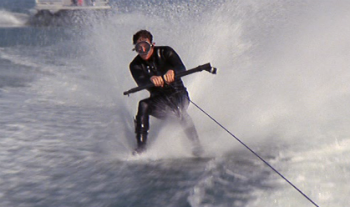 Licence to Kill has more guts to it — figuratively and literally — than other Bonds. Creativity in this movie is mainly devoted to murders, which include death by electric eel, death by mealworms, death by shark and shark harpoon, getting blown up inside a decompression chamber, getting mashed up by a cocaine grinder, getting gored by a forklift, and getting doused with gas and set on fire. As you would suspect, none of this is done with any finesse, which sums up the film’s overriding tone and central problem. For some, Licence to Kill might seem like a breath of fresh air, a true rendering of Fleming’s pulp-tastic world, where Bond sweats and the emotional stakes are high. For others, it might be too derivative of Lethal Weapon or Die Hard, whose heroes are thuggish on a good day (even the composer for those films, Michael Kamen, ends up here, telegraphing every dramatic moment with his blaring score). Fleming never shied away from a little ultraviolence in his stories, but it was always balanced by catharsis and the haughty elegance of his narrative voice. Licence to Kill only has one dominant mode: grim. How grim? At one point Pam orders a Budweiser with a lime, and Bond says without hesitation or even reluctance, “Same.” That right there is grim, friends. That dourness handcuffs director John Glen, who usually can be counted on for his sprightly stunt scenes. Save for one glorious image — the sight of Bond hydroplaning behind a seaplane — the action sequences are fractured into ill-fitted bits and pieces that don’t generate rhythm or tension. The problems are apparent right from the pre-title sequence, which is shot in a sloppy rush, with a way-out-of-place slo-mo moment of Felix Leiter charging into the fray in his wedding tux smack in the middle of it.
Licence to Kill has more guts to it — figuratively and literally — than other Bonds. Creativity in this movie is mainly devoted to murders, which include death by electric eel, death by mealworms, death by shark and shark harpoon, getting blown up inside a decompression chamber, getting mashed up by a cocaine grinder, getting gored by a forklift, and getting doused with gas and set on fire. As you would suspect, none of this is done with any finesse, which sums up the film’s overriding tone and central problem. For some, Licence to Kill might seem like a breath of fresh air, a true rendering of Fleming’s pulp-tastic world, where Bond sweats and the emotional stakes are high. For others, it might be too derivative of Lethal Weapon or Die Hard, whose heroes are thuggish on a good day (even the composer for those films, Michael Kamen, ends up here, telegraphing every dramatic moment with his blaring score). Fleming never shied away from a little ultraviolence in his stories, but it was always balanced by catharsis and the haughty elegance of his narrative voice. Licence to Kill only has one dominant mode: grim. How grim? At one point Pam orders a Budweiser with a lime, and Bond says without hesitation or even reluctance, “Same.” That right there is grim, friends. That dourness handcuffs director John Glen, who usually can be counted on for his sprightly stunt scenes. Save for one glorious image — the sight of Bond hydroplaning behind a seaplane — the action sequences are fractured into ill-fitted bits and pieces that don’t generate rhythm or tension. The problems are apparent right from the pre-title sequence, which is shot in a sloppy rush, with a way-out-of-place slo-mo moment of Felix Leiter charging into the fray in his wedding tux smack in the middle of it.
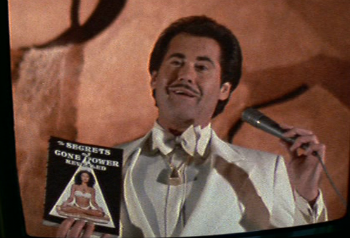 It would be one thing to tolerate Licence to Kill‘s erratic pacing and gloomy tone; it’s quite another when you also have to deal with the sheer randomness that blows through the movie every so often. One passage finds Bond carrying out an assassination attempt that is Fleming-esque in its detail and hushed tension — and then Bond is ambushed and cold-cocked by ninjas (never mind that there hasn’t been the hint of a ninja before this moment), and minutes later the ninjas themselves are blasted into smithereens by a military junta commandeered by Sanchez, the last surviving ninja trying to take some of Sanchez’s thugs with her before she’s blown away by… you get the picture. Then you have to contend with the likes of Wayne Newton(!) in the cast. As Dr. Joe Butcher, a TV preacher who happens to be a front for Sanchez’s drug operation, he might be there for comic relief, but one look at that over-tanned, mustachioed mug can only induce a sense of alarm. It says something when the film devotes five minutes to Dr. Joe trying to hit on Pam, and barely spends any time on the dramatic fallout when Sanchez uncovers Bond’s duplicity. It’s pretty hard to make the case that you have a hard-edged, adult thriller with lapses as bizarre as these.
It would be one thing to tolerate Licence to Kill‘s erratic pacing and gloomy tone; it’s quite another when you also have to deal with the sheer randomness that blows through the movie every so often. One passage finds Bond carrying out an assassination attempt that is Fleming-esque in its detail and hushed tension — and then Bond is ambushed and cold-cocked by ninjas (never mind that there hasn’t been the hint of a ninja before this moment), and minutes later the ninjas themselves are blasted into smithereens by a military junta commandeered by Sanchez, the last surviving ninja trying to take some of Sanchez’s thugs with her before she’s blown away by… you get the picture. Then you have to contend with the likes of Wayne Newton(!) in the cast. As Dr. Joe Butcher, a TV preacher who happens to be a front for Sanchez’s drug operation, he might be there for comic relief, but one look at that over-tanned, mustachioed mug can only induce a sense of alarm. It says something when the film devotes five minutes to Dr. Joe trying to hit on Pam, and barely spends any time on the dramatic fallout when Sanchez uncovers Bond’s duplicity. It’s pretty hard to make the case that you have a hard-edged, adult thriller with lapses as bizarre as these.
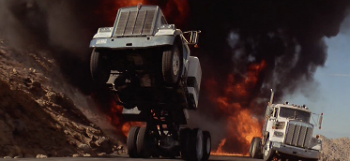 And what of Dalton? He is a theatrical performer through and through — every time he’s called on to emote, you can feel him playing towards the cheap seats in the Globe Theatre. He certainly gives a more full-blooded portrayal of Bond here than he did in The Living Daylights, and in a film that had more subtlety, where he could have modulated his performance, we might have really had something. Sadly, this isn’t that movie. (That Eddie Munster haircut doesn’t help, either.) Fleming purists can rightly point out how he resembles the literary 007, but Bond of the books doesn’t sit too well within the drab shenanigans of Licence. The climax of the film wants to forsake typical extravagance in favor of more grit — it’s just Bond, a prop plane, and three eighteen-wheelers loaded with liquidized cocaine that need to be stopped — and while there’s no denying the quality of the stuntwork and the explosions, by the time 007 is popping wheelies in a truck cab, you might be feeling as schizophrenic as this film has turned out to be.
And what of Dalton? He is a theatrical performer through and through — every time he’s called on to emote, you can feel him playing towards the cheap seats in the Globe Theatre. He certainly gives a more full-blooded portrayal of Bond here than he did in The Living Daylights, and in a film that had more subtlety, where he could have modulated his performance, we might have really had something. Sadly, this isn’t that movie. (That Eddie Munster haircut doesn’t help, either.) Fleming purists can rightly point out how he resembles the literary 007, but Bond of the books doesn’t sit too well within the drab shenanigans of Licence. The climax of the film wants to forsake typical extravagance in favor of more grit — it’s just Bond, a prop plane, and three eighteen-wheelers loaded with liquidized cocaine that need to be stopped — and while there’s no denying the quality of the stuntwork and the explosions, by the time 007 is popping wheelies in a truck cab, you might be feeling as schizophrenic as this film has turned out to be.
The worst is yet to come, though. When Bond (spoiler alert, but not really) gets his revenge, you would expect a melancholy denouement; after all, the man has defied orders from the Service, fouled up a major operation, and basically wreaked havoc in a foreign nation without authorization. But no — he is informed by Felix Leiter (looking remarkably chipper for a man who has lost his wife and a few limbs) that all is forgiven and MI-6 are ready to welcome him back. That turnaround is indicative of Licence to Kill as a whole: it wants to challenge your expectations of what makes Bond Bond, only to press a giant reset button every time true consequences threaten. At least On Her Majesty’s Secret Service had the courage to take its initial premise (Bond forever an agent alone) to its logical, painful conclusion. To add insult to injury, the heretofore tough-gal Pam is reduced to your standard simpering Bond girl, just so we get the benefit of a final kiss, Bond and his woman off to their latest shag, roll credits.
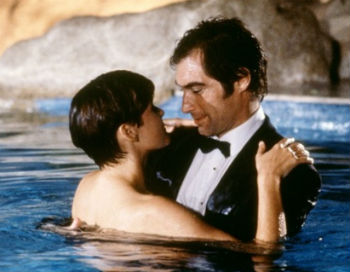 “The proof is in the ravioli,” Cubby Broccoli was fond of saying, and the returns on Licence to Kill were as indigestible as ravioli gets: the movie was by no means a bomb, but it has the dubious distinction of being the least profitable Bond film thus far. Compared to other entries in the 1989 Summer of Sequels, it was an out-and-out failure. The public had spoken. Once upon a time, Bond was the pace-setter; now he was an also-ran, and to add insult to injury, he would be forced into hibernation. United Artists was about to go belly-up, setting off a chain of lawsuits and counter-suits as Broccoli and UA would joust over control of the Bond franchise for the next half-decade. By the time the dust had settled, Dalton would be gone — whatever one can say about his legacy (and that will be forever debated), one must admit that he put his own stamp on the role, and he’s certainly gained more admirers over the years, even if his films have not. That his interpretation never caught on with most critics and the public can be put down to bad timing, a franchise that was operating on low wattage, or whatever mysterious forces that determine whether an actor in a role “clicks” with an audience. When Bond returned, he would be played by an actor who by all accounts would “click” with the multiplex crowds — but what sort of Bond would he be, and would the franchise emerge reborn and re-energized? The Cold War was about to end, the ’90s were calling, and Bond was about to get a lot simpler, and more complicated.
“The proof is in the ravioli,” Cubby Broccoli was fond of saying, and the returns on Licence to Kill were as indigestible as ravioli gets: the movie was by no means a bomb, but it has the dubious distinction of being the least profitable Bond film thus far. Compared to other entries in the 1989 Summer of Sequels, it was an out-and-out failure. The public had spoken. Once upon a time, Bond was the pace-setter; now he was an also-ran, and to add insult to injury, he would be forced into hibernation. United Artists was about to go belly-up, setting off a chain of lawsuits and counter-suits as Broccoli and UA would joust over control of the Bond franchise for the next half-decade. By the time the dust had settled, Dalton would be gone — whatever one can say about his legacy (and that will be forever debated), one must admit that he put his own stamp on the role, and he’s certainly gained more admirers over the years, even if his films have not. That his interpretation never caught on with most critics and the public can be put down to bad timing, a franchise that was operating on low wattage, or whatever mysterious forces that determine whether an actor in a role “clicks” with an audience. When Bond returned, he would be played by an actor who by all accounts would “click” with the multiplex crowds — but what sort of Bond would he be, and would the franchise emerge reborn and re-energized? The Cold War was about to end, the ’90s were calling, and Bond was about to get a lot simpler, and more complicated.
